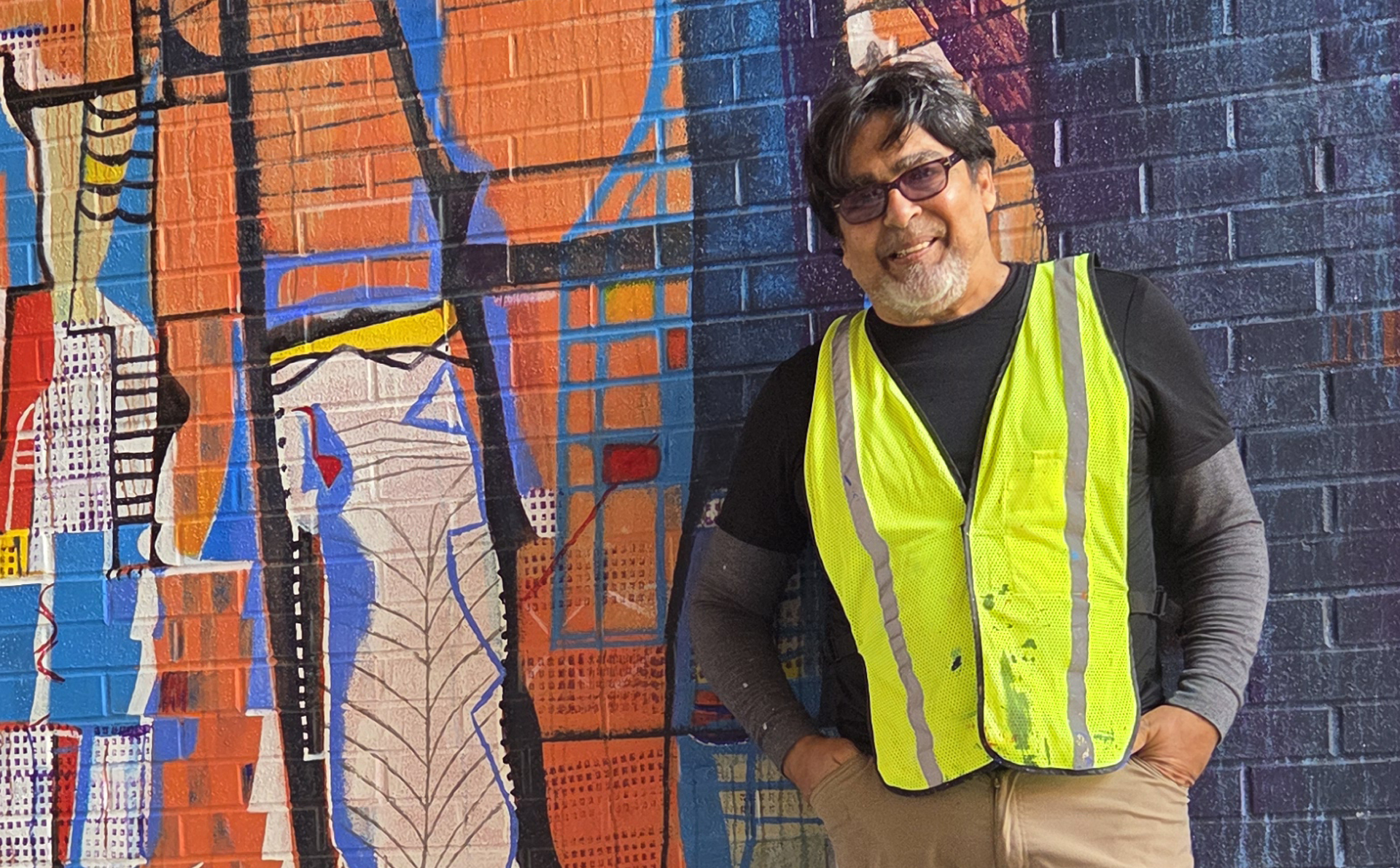 Go to English Version
Go to English VersionLeyva is a Cuban artist whose life and work are deeply marked by persistence, reinvention, and resilience. What is truly singular is that, even through transformation, his voice remains intact.
I first knew him through that grandiloquent exhibition curated by Mario Miguel González for the 9th Havana Biennial in 2006—Manual de Instrucciones, held at the National Center for Conservation, Restoration and Museology (CENCREM), April 1st, Havana. We crossed paths several more times in Cuba, at the home of Javier Guerra, another artist from my generation, recently deceased. But over fifteen years passed without seeing him again—until we met here, in Cincinnati. Just a few days ago, we had a long conversation, backs turned to a golden dusk, in a quiet sanctuary. And beyond the always vague critical analysis of his visual work, what truly interested me was his personal trajectory and lived experience.
Trained in a context where artistic practice is often intertwined with economic necessity, his career—like that of most Cuban artists—has oscillated between periods of scarcity and moments of international recognition.
Leyva does not define himself solely by his painting; rather, he is guided by a work ethic that permeates everything he does—from design to construction, illustration to digital tools. Painting, however, has always been his gravitational center—the core of a life devoted to art with uncommon intensity.
His style does not conform to fixed formulas; it is, rather, a way of approaching painting with rigor, honesty, and an ever-watchful eye on his surroundings. Even in moments of creative urgency, Leyva exerts exacting control over his work: if a piece does not convince him, he lets it rest, reshapes it, or discards it altogether, always pursuing that intensity he demands as his standard.
This commitment to quality runs through the entirety of his practice. He claims he has never given away or sold a piece that didn’t meet his standards. Instead of discarding what he considers a churro (a dud), he transforms it—through time, layers, and reflection. This process of reconfiguration speaks to a mature and exacting relationship with painting. It is not merely inspiration, but a sustained exercise in faith, patience, and craft. His method often involves working on several pieces at once, allowing for a kind of creative choreography—he moves between canvases with palette in hand, searching for the moment when each one falls into its final form.
Among the decisive moments in his journey, one must highlight the artistic and economic momentum he gained starting in 2004. After some difficult years, he established himself through successful exhibitions—such as Leyva’s Brothers, in Panama City—and subsequent acquisition into significant private collections. He entered a period of maturity and sustained recognition from 2007 onward, securing his presence in the art circuit with a steady and well-received body of work. Some of the collectors who approached his work developed relationships that went beyond the commercial—anchored instead in mutual respect and a sincere alignment with his artistic quest.
Beyond the jobs he took on to support his family, Leyva never abandoned painting—it has been for him a sustained conviction, not a passing option. From stamp illustrations to empirical architectural design, his versatility speaks of a total creator, rather than a painter isolated in his studio. For a time, his drive to experiment led him to explore digital media, which he integrated naturally into his creative process—though he now admits some distance from them due to lack of use. What he has never relinquished, however, is the will to create, even in moments of crisis such as the one he faced during the pandemic, when a serious health complication and deep stress caused him to lose sight in one eye for a time.

His move to Georgia marked a new chapter: thanks to the generous support of a family who offered him a space conducive to living and creating, he found a setting of stability that allowed him to continue his work under privileged conditions. Yet far from isolating him, that peace deepened his connection to Cuba and to his people, prompting him to extend a hand to others—rooted in a conception of art not only as expression, but as ethical responsibility and tangible sustenance.
Esteban Leyva’s story is, ultimately, that of an artist who has navigated difficult contexts without losing faith in his work. His painting, as his story reveals, is made with effort, with love, and with resistance. He believes in what he does, demands much of himself, and moves through the world with a blend of nobility and pragmatism. He does not present himself as a romantic genius, but rather as a worker of beauty—keenly aware of the value of what he creates and of the dignity involved in defending both his work and his way of life. His path affirms that art, beyond style or market, can be a route to personal freedom.
And so… what is Leyva doing in the American Midwest, after all?
Well—that, of course, is the subject of the next article.










Comments powered by Talkyard.